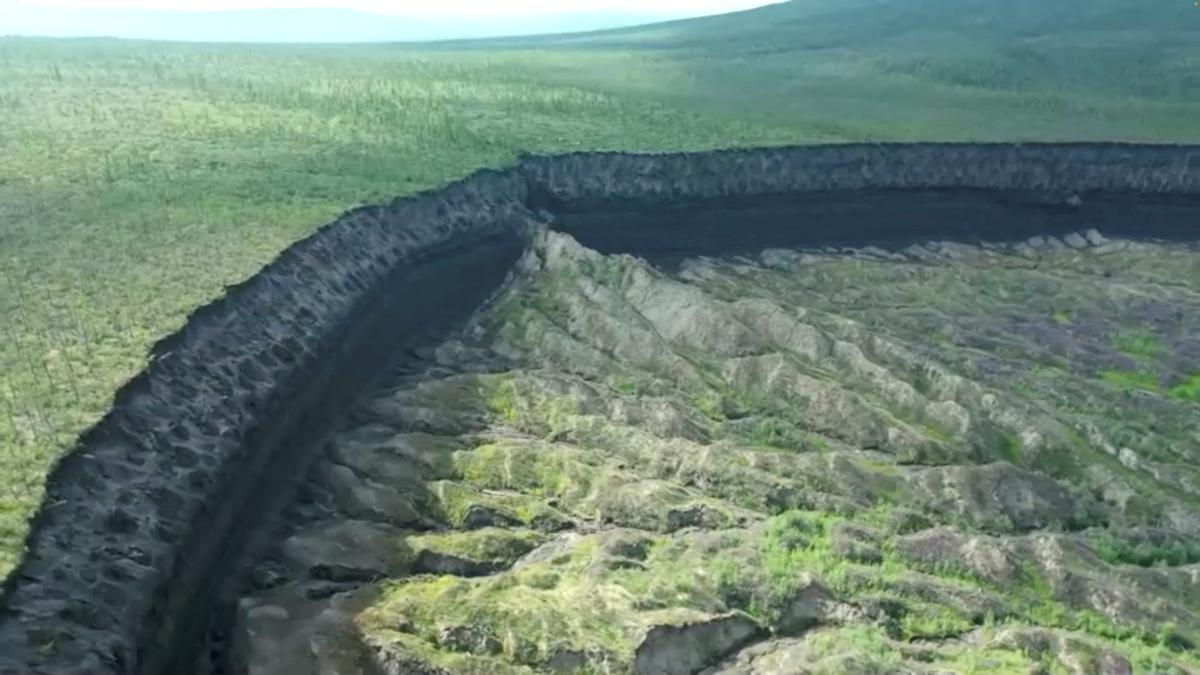The Batagaika crater, the world’s largest permafrost crater is expanding at an alarming rate in Russia’s Far East.
What’s in News?
Aerial footage of the world’s largest permafrost crater, the Batagaika crater has revealed its details. The crater has been seen in the far- eastern Siberian taiga (that is, boreal forest). It’s a rapidly growing 1 km (0.6 mile) pit.
Scientists called this crater as a ‘mega-slump’ which highlights the rapid changes occurring to Earth’s geology.
As per the report presented by London-based news service Reuters, the crater first formed after the area was cleared for lumber in the 1960s and now it is expanding at a rate of about 10m per year.
About Permafrost Crater
- Permafrost is any ground that remains completely frozen or colder for at least two years straight.
- Permafrost is mostly found in regions with high mountains and in Earth’s higher latitudes i.e. near the North and South Poles.
- It consists of a combination of soil, rock and sand held together by ice.
Formation:
Permafrost are formed when the cold temperature is present over an extended period prevents the ground from thawing during the warmer months. The formation of permafrost is affected by several environmental factors which include air temperature, snow cover and ground insulation. It’s thickness can vary from a few centimeters to several hundred meters.
Types of Permafrost:
- Continuous Permafrost: This is the type of permafrost which covers large area and remains frozen throughout the year.
- Discontinuous Permafrost: This permafrost is found in regions with milder climates. This permafrost also includes patches of frozen ground interspersed with unfrozen areas.
- Sporadic Permafrost: This type of permafrost occurs in regions where only isolated patches of frozen ground exist amid predominately unfrozen ground.
Causes:
Permafrost Craters are generally formed due to the thawing of permafrost. Deforestation, changes in land use, and warming temperatures are some of the factors contributing to the formation of the permafrost craters.
Batagaika Crater
Batagaika Crater, also known as “gateway to the underworld”, is a massive gash in the landscape, about one km long which first appeared in 1960s. Deforestation in the area caused the loss of ground ice, leading to erosion and land sinking, resulting in the crater’s formation.
Rapid Growth and “Mega-Slump”
The locals have witnessed the rapid expansion of the crater over time. Scientists have called it as “mega-slump” and it possess significant danger. The entire country is warming at least 2.5 times faster than the rest of the world, and this is causing the long-frozen tundra to melt.
Implications for Climate Change:
- The thawing permafrost in the Batagaika Crater contains an enormous quantity of organic carbon.
- The thawed soil release the greenhouse gases which may further contribute to global warming.
- The increasing air temperature will likely to higher expansion rates of the crater.



 Indian Olympic Medal Winners List Till N...
Indian Olympic Medal Winners List Till N...
 Who is the Inventor of the Gramophone?
Who is the Inventor of the Gramophone?
 HS Dhaliwal Appointed New DGP Of Andaman...
HS Dhaliwal Appointed New DGP Of Andaman...
